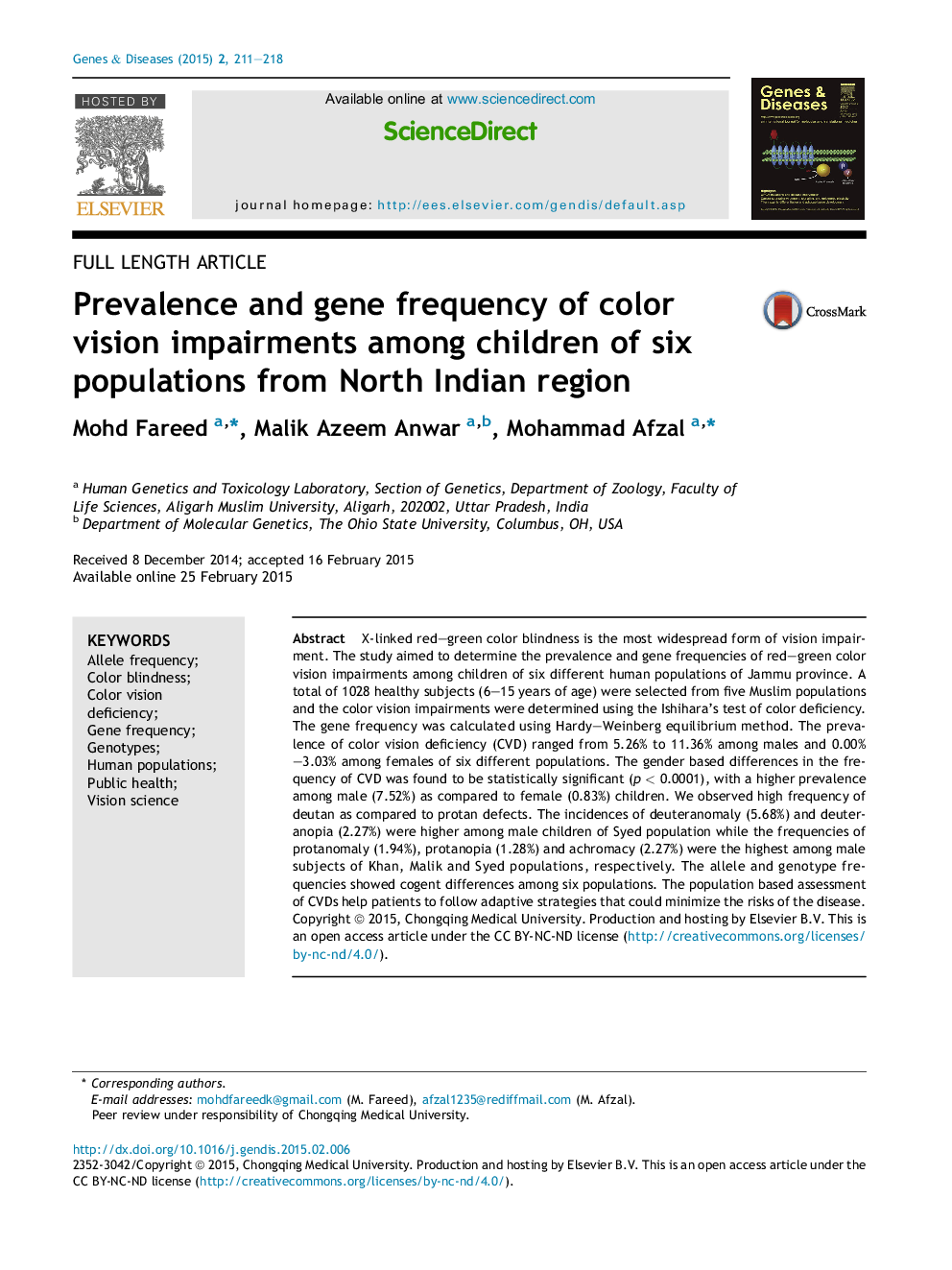| کد مقاله | کد نشریه | سال انتشار | مقاله انگلیسی | نسخه تمام متن |
|---|---|---|---|---|
| 2182681 | 1095502 | 2015 | 8 صفحه PDF | دانلود رایگان |
X-linked red–green color blindness is the most widespread form of vision impairment. The study aimed to determine the prevalence and gene frequencies of red–green color vision impairments among children of six different human populations of Jammu province. A total of 1028 healthy subjects (6–15 years of age) were selected from five Muslim populations and the color vision impairments were determined using the Ishihara's test of color deficiency. The gene frequency was calculated using Hardy–Weinberg equilibrium method. The prevalence of color vision deficiency (CVD) ranged from 5.26% to 11.36% among males and 0.00%–3.03% among females of six different populations. The gender based differences in the frequency of CVD was found to be statistically significant (p < 0.0001), with a higher prevalence among male (7.52%) as compared to female (0.83%) children. We observed high frequency of deutan as compared to protan defects. The incidences of deuteranomaly (5.68%) and deuteranopia (2.27%) were higher among male children of Syed population while the frequencies of protanomaly (1.94%), protanopia (1.28%) and achromacy (2.27%) were the highest among male subjects of Khan, Malik and Syed populations, respectively. The allele and genotype frequencies showed cogent differences among six populations. The population based assessment of CVDs help patients to follow adaptive strategies that could minimize the risks of the disease.
Journal: Genes & Diseases - Volume 2, Issue 2, June 2015, Pages 211–218
